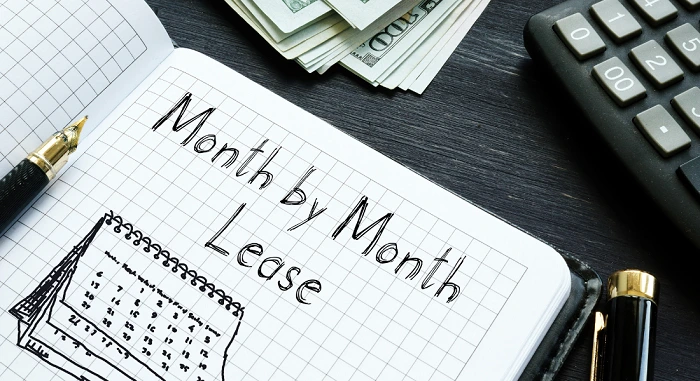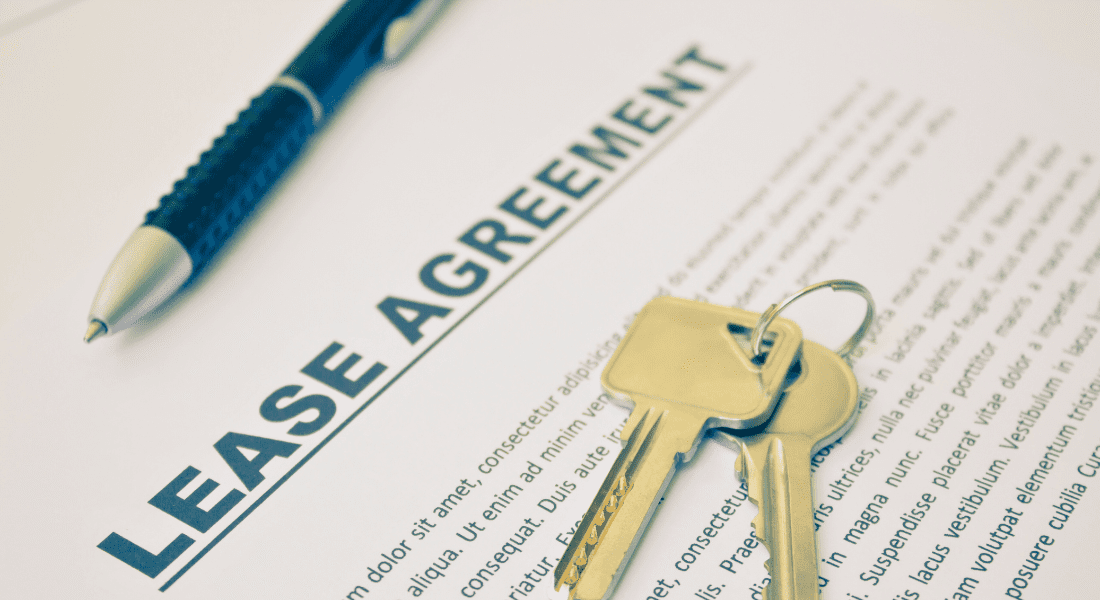In the world of real estate and property rentals, the traditional concept of long-term leases has transformed. With changing lifestyles, job dynamics, and personal preferences, more individuals are now leaning towards the convenience and flexibility offered by month-to-month leases. In this article, we’ll explore the ins and outs of month-to-month leases, their advantages, potential downsides, and how they compare to longer-term leasing arrangements.
Introduction
Over the years, the landscape of property rental has evolved, giving rise to alternatives like month-to-month leases. These arrangements have gained popularity, offering tenants greater flexibility compared to traditional long-term agreements. In this in-depth exploration, we’ll delve into the intricacies of month-to-month leases, examining their benefits, considerations, and how they compare to long-term leases.
Understanding Month-to-Month Leases
A month-to-month lease, also known as a periodic lease, provides tenants with the flexibility of occupying a property on a monthly basis. In contrast to traditional leases that often extend for a year or more, month-to-month leases automatically renew at the end of each month, with termination possible by either the tenant or the landlord.
Month-to-Month Leases Benefits
Flexibility and Convenience
Month-to-month leases stand out for their remarkable flexibility. Tenants can navigate changes in personal or professional lives without the constraints of a long-term commitment. Whether it’s a sudden job transfer or a decision to relocate, tenants can adapt with ease.
Short-Term Commitment
The standout benefit lies in the short-term commitment required. This is particularly advantageous for individuals uncertain about their plans or those valuing the ability to relocate without being bound by a lengthy lease agreement.
Ideal for Transitional Periods
Month-to-month leases serve as an ideal solution for individuals undergoing transitional phases such as recent graduates, temporary workers, or those experiencing life changes like divorce or downsizing. They provide a stable living arrangement without the need for a prolonged commitment.
Considerations Before Opting for a Month-to-Month Lease
While month-to-month leases offer various benefits, there are crucial considerations to keep in mind before deciding on this arrangement.
Rental Rates and Fluctuations
Month-to-month leases may be associated with slightly higher rental rates, as landlords may adjust rent more frequently to keep up with market changes. However, this fluctuation can work in the tenant’s favor if market rates decrease.
Landlord-Tenant Relationships
The dynamic between landlords and tenants may differ in month-to-month leases compared to long-term arrangements. Landlords might be more selective, seeking tenants with stable incomes and good references.
Lack of Rent Control
In certain locations, month-to-month leases might not be subject to the same rent control regulations as longer leases, potentially allowing landlords to increase rent significantly with proper notice.
Month-to-Month vs. Long-Term Leases: A Comparison
When pondering over the decision between committing to a long-term lease or opting for the flexibility of a month-to-month arrangement, it’s crucial to weigh various factors that could significantly impact your renting experience.
Stability vs. Flexibility
At the forefront of the comparison lies the disparity in lease duration. Long-term leases, typically spanning a year or more, offer a sense of stability and security, providing tenants with a fixed living situation for an extended period. Conversely, month-to-month leases offer a more fluid arrangement, granting tenants the freedom to terminate the lease with relatively short notice, often within 30 days. While long-term leases provide a feeling of rootedness, month-to-month agreements cater to those seeking flexibility, such as students, temporary workers, or individuals in transitional phases of life.
Rent Stability: Predictability vs. Fluctuations
Another crucial aspect to consider is rent stability. Long-term leases typically come with fixed rental rates throughout the duration of the lease, ensuring predictability in monthly housing expenses. On the other hand, month-to-month leases may subject tenants to fluctuating rent prices, as landlords retain the flexibility to adjust rental rates with proper notice. This fluctuation could present challenges for tenants who rely on a stable budget or have financial constraints.
Negotiating Terms: Rigidity vs. Flexibility
When it comes to negotiating lease terms, the disparity between long-term and month-to-month leases becomes apparent. Long-term lease agreements often come with predetermined, standardized terms, leaving minimal room for negotiation. Conversely, month-to-month arrangements offer tenants greater flexibility in negotiating specific terms, such as pet policies, furnishings, or utilities. This increased negotiation potential can be advantageous for tenants seeking personalized rental agreements tailored to their specific needs and preferences.
In essence, the choice between a month-to-month lease and a long-term lease boils down to individual priorities and circumstances. While long-term leases offer stability and predictability, month-to-month agreements provide flexibility and freedom. Understanding the nuances of each option empowers tenants to make informed decisions that align with their unique living situations and preferences.
Who Benefits Most from Month-to-Month Leases?
Frequent Travelers
For those frequently traveling for work or leisure, month-to-month leases provide an excellent solution, offering a home base without concerns about leaving a property unattended for extended periods.
Temporary Job Assignments
Professionals on short-term job assignments can avoid the hassle of breaking a long-term lease by opting for a month-to-month arrangement aligned with their assignment’s duration.
Students
Students can benefit from the flexibility of month-to-month leases, especially when uncertain about academic timelines or planning to return home during breaks.
How to Secure a Month-to-Month Lease
Securing a month-to-month lease requires a strategic approach that involves effective communication, highlighting your reliability, and providing strong references to bolster your application.
Communicate Your Intent
One of the first steps in securing a month-to-month lease is to clearly communicate your reasons for preferring this type of arrangement. Whether you value flexibility due to uncertain future plans, temporary work assignments, or simply prefer the freedom to relocate without being tied down to a long-term commitment, expressing your intentions openly and honestly can help build trust with potential landlords. By demonstrating that you have considered your housing needs thoughtfully and are forthcoming about your preferences, landlords are more likely to consider your application favorably.
Highlight Your Reliability
Landlords prioritize tenants who demonstrate reliability and responsibility. When seeking a month-to-month lease, it’s essential to emphasize your track record as a dependable tenant who will take good care of the property during your stay. Highlight any previous renting experiences where you maintained the property well, paid rent on time, and adhered to lease agreements. Providing evidence of your ability to uphold your end of the rental agreement instills confidence in landlords that you will treat their property with respect, even in a short-term arrangement.
Provide References
Solid references can significantly strengthen your application for a month-to-month lease. Consider obtaining references from previous landlords or employers who can vouch for your character, reliability, and suitability as a tenant. Positive testimonials that attest to your responsible behavior, financial stability, and respectful treatment of rental
properties can significantly enhance your credibility in the eyes of potential landlords. Additionally, references that highlight your ability to adapt to different living situations and maintain positive relationships with landlords can further bolster your application for a month-to-month lease.
Addressing Common Misconceptions about Month-to-Month Leases
Higher Rental Costs
One prevalent misconception surrounding month-to-month leases is the assumption that they come with significantly higher rental costs compared to long-term leases. While it’s true that month-to-month leases might entail slightly higher rent, this increase in cost is often justified by the flexibility they offer.
For individuals prioritizing short-term convenience and the freedom to relocate or adjust their living situation without being tied down to a long-term commitment, the flexibility of a month-to-month lease can outweigh the marginal increase in rent. Additionally, the ability to negotiate rental terms and conditions, including rent prices, can mitigate any perceived financial burden associated with month-to-month leases.
Lack of Stability
Another common misconception is that month-to-month leases lack stability, leading tenants to feel insecure about their housing situation. While it’s undeniable that month-to-month leases offer less long-term certainty compared to fixed-term leases, this flexibility can be a valuable trade-off for individuals with changing circumstances.
Whether it’s due to job relocations, personal transitions, or uncertain future plans, the ability to adjust living arrangements with relatively short notice can provide peace of mind and adaptability. Moreover, with proper communication and planning, tenants can maintain stability in their housing situation even with a month-to-month lease, fostering a sense of security despite the absence of a long-term commitment.
Limited Tenant Rights
There’s a misconception that tenants under month-to-month leases have limited rights, leaving them vulnerable to unfair eviction or abrupt rent increases. However, tenants under month-to-month leases are still entitled to certain rights and protections under landlord-tenant laws, which vary by jurisdiction. These rights typically include protection from unlawful eviction, adequate notice for rent increases, and the right to habitable living conditions.
Landlord-tenant laws aim to strike a balance between landlord rights and tenant protections, ensuring that tenants under month-to-month leases are not unfairly disadvantaged. It’s essential for tenants to familiarize themselves with their rights and responsibilities under local laws to assert their legal protections and advocate for their interests if necessary.
Conclusion
Month-to-month leases have revolutionized how people approach renting
properties. With their flexibility, short-term commitment, and suitability for various lifestyles, these leases offer a practical alternative to traditional long-term agreements. Whether you’re a frequent traveler, a student, or someone navigating transitional periods, the benefits of month-to-month leases are hard to ignore. The evolving landscape of property rentals continues to embrace these adaptable arrangements, providing tenants with the freedom to live life on their terms.
FAQs About Month-to-Month Leases
Are month-to-month leases more expensive than long-term leases?
Month-to-month leases might have slightly higher rent, but the added flexibility can make the cost worthwhile.
Can landlords increase the rent every month under this arrangement?
Landlords can adjust the rent with proper notice, but it’s usually not every month.
Do month-to-month tenants have any rights in terms of lease termination?
Yes, tenants typically need to be given a notice period before lease termination, which varies by jurisdiction.
Can I switch from a long-term lease to a month-to-month arrangement?
Depending on your lease terms, you might need to wait until your long-term lease expires or negotiate with your landlord.
Is a month-to-month lease suitable for families?
It can be suitable, but families often prefer the stability of longer leases to provide consistency for children.





